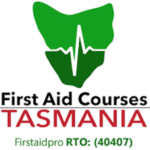CPR may seem like it has been around for ages, but this first aid technique was not finalized until the 60s.
Even today, health and medical experts continue implementing changes to improve its effectiveness, with the most recent change occurring in 2020.
Before diving into its history and evolution, let’s define CPR.
What Is CPR?
CPR stands for cardiopulmonary resuscitation, a lifesaving technique used to revive someone whose heart stopped due to sudden cardiac arrest. It is performed by pressing on the chest (chest compression) and breathing air into the person’s mouth (rescue breathing).
Cardiopulmonary resuscitation comes from two words – cardio which means heart, and pulmonary, which refers to the lungs.
CPR allows the oxygenated blood to circulate throughout the body’s vital organs, including the brain and heart. The technique can keep the person stable until more advanced procedures, such as defibrillation, can treat a sudden cardiac arrest.
Application of bystander CPR in the first few minutes of the emergency is critical. It can double the likelihood of survival for cardiac arrest victims.
CPR And Its History
The beginning of CPR dates back to the 18th century up to today.
Here, we put a few highlights of the intricate and fascinating evolution of this lifesaving technique.
1700s
The French Academy of Science (French: Académie des Sciences) officially recommended mouth-to-mouth resuscitation in Paris in 1740.
Two decades later, The Society for the Recovery of Drowned Persons was hailed as the first organized effort in dealing with a sudden and unexpected death in 1767.
1800s
In the 80s, the Hall and Silvester methods became known to the public as the most commonly used form of artificial respiration, which remained until the 20th century.
Marshall Hall, a London physician, introduce his version of performing resuscitation technique. It involves the patient doing alternative repositioning from face up to both sides.
Yet another physician from London, Henry Silvester, creates the chest pressure arm-lift method. The person’s arm is raised to expand the chest. Then, the responder cross hands over the chest to apply expiratory pressure.
1960s
Fast forward to the 1960s, CPR was first introduced back as a technique of restoring blood and oxygen supply to the brain temporarily.
In the same decade, mouth to mouth resuscitation is combined with chest compression, and a training film titled “The Pulse of Life” is shown to the public.
In 1962 and 1963, the American Heart Association formally endorsed the CPR technique.
In 1966, the lifesaving technique was formalized and officially published.
1992-The 2000s
Decades after, the International Committee on Resuscitation (ILCOR) was founded to collect, review, and share valuable scientific data on resuscitation. ILCOR is also the governing authority that produces guidelines on CPR techniques.
In the 2000s, ILCOR announced a new recommendation based on updated scientific research. It reveals that hands-only CPR (no mouth to mouth) is nearly as effective as combining two techniques when performed on drowning victims.
2004
The American Heart Association and ILCOR release a statement on AED use in children.
The announcement states that children ages 1 to 8 years who have no signs of circulation or not showing any response are allowed to use an AED. Defibrillation is safe to use even for children, as the device won’t deliver a shock unless necessary.
2015 – Present
A continuous evidence evaluation process is conducted by AHA, which releases every year. It contains guidelines for CPR and Emergency Cardiovascular Care (ECC), with the latest update in 2020.
The goal is to push resuscitation providers, RTOs, and first aid and CPR instructors to focus on the current science and guidelines recommendations.
It usually results in resuscitation training and practice changes, to be followed by RTOs and CPR providers.
Get CPR Training
From the 18th century up to the present, CPR has helped bystanders and medical personnel to become key providers in cardiac emergencies.
With the ongoing research, development, and innovative approach to resuscitation technology, the future of CPR in the next decades looks promising.
Get a CPR certification to have the confidence to apply the technique to those in need.
A CPR course will teach the current and updated techniques today and potentially save lives tomorrow. CPR is a tool that everyone – parents, workers, civilians, and even children – should know if a life-threatening cardiac emergency occurs.
First Aid Courses Tasmania uses the latest research and guidelines to deliver our First Aid and CPR classes. It means that our students will gain updated insight on how to perform this technique and gain confidence quickly and effectively as possible.








